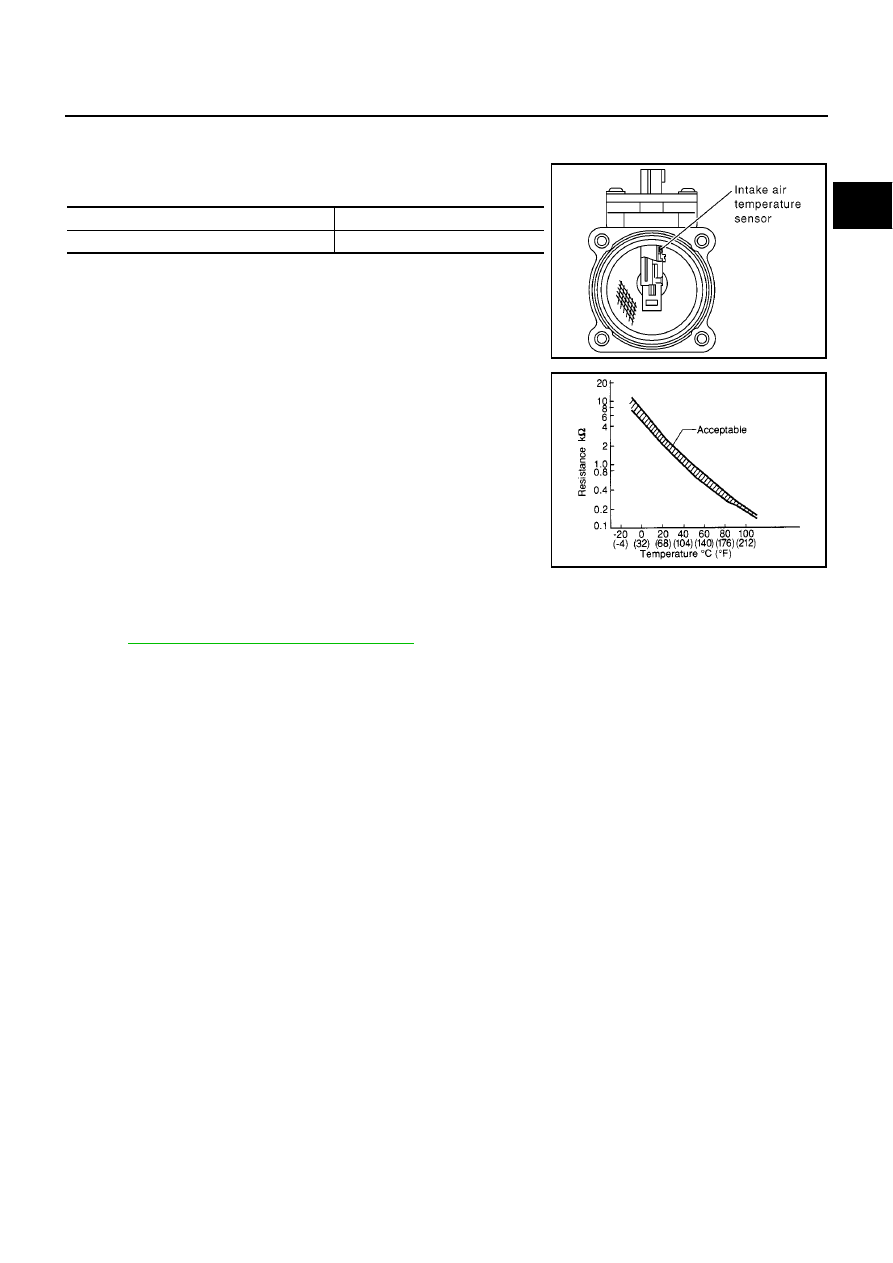Almera Tino V10 (2003 year). Manual - part 73

DTC P0112, P0113 IAT SENSOR
EC-187
[QG (WITH EURO-OBD)]
C
D
E
F
G
H
I
J
K
L
M
A
EC
Component Inspection
EBS00QJ0
INTAKE AIR TEMPERATURE SENSOR
1.
Check resistance between mass air flow sensor terminals 3 and
5 under the following conditions.
2.
If NG, replace mass air flow sensor (with intake air temperature
sensor).
Removal and Installation
EBS00QJ1
MASS AIR FLOW SENSOR
Refer to
EM-16, "AIR CLEANER AND AIR DUCT"
.
Intake air temperature
°
C (
°
F)
Resistance k
Ω
25 (77)
1.9 - 2.1
SEC266C
SEF012P